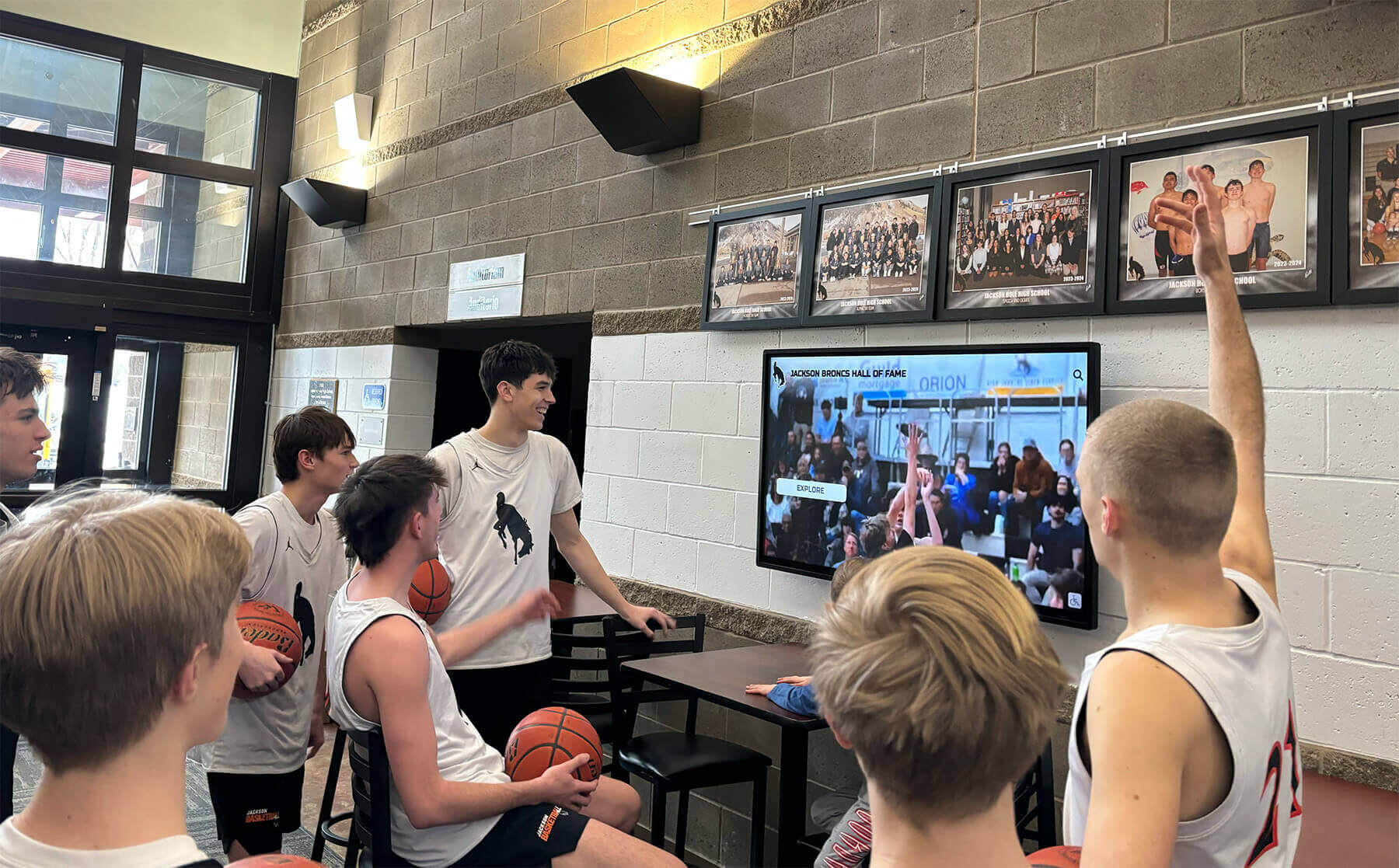Basketball halls of fame represent the ultimate recognition for excellence in one of the world’s most popular sports. From the prestigious Naismith Memorial Basketball Hall of Fame in Springfield, Massachusetts, to high school gyms celebrating local legends, these recognition programs preserve basketball history, inspire current players, and honor those who have elevated the game through extraordinary skill, leadership, and contributions.
Whether you’re exploring the storied history of the Naismith Memorial Basketball Hall of Fame, planning a basketball hall of fame for your high school or college program, or seeking to modernize your existing recognition displays, understanding how effective basketball halls of fame operate provides valuable insights for creating meaningful, lasting recognition that celebrates basketball excellence at every level.
Why Basketball Halls of Fame Matter
Basketball halls of fame serve critical purposes beyond simple recognition. They preserve the history and evolution of basketball across all competitive levels, inspire current players by showcasing pathways to excellence, engage alumni and fan communities around shared basketball experiences, celebrate coaches, contributors, and teams alongside individual players, and demonstrate institutional commitment to honoring comprehensive basketball achievement. Modern digital recognition solutions like Rocket Alumni Solutions enable basketball programs to create professional displays that honor unlimited inductees while remaining easily updatable as new legends join the hall of fame each year.
The Naismith Memorial Basketball Hall of Fame: Basketball’s Ultimate Honor
The Naismith Memorial Basketball Hall of Fame stands as basketball’s most prestigious recognition institution, honoring excellence across all levels of basketball—from high school and college to professional leagues worldwide, including the NBA, WNBA, and international competitions.
History and Significance
Located in Springfield, Massachusetts—where Dr. James Naismith invented basketball in 1891—the Basketball Hall of Fame opened in 1959 and has since inducted over 400 individuals and teams representing the greatest achievements in basketball history. The current facility, which opened in 2002, features more than 40,000 square feet of basketball history, interactive exhibits, and recognition displays.
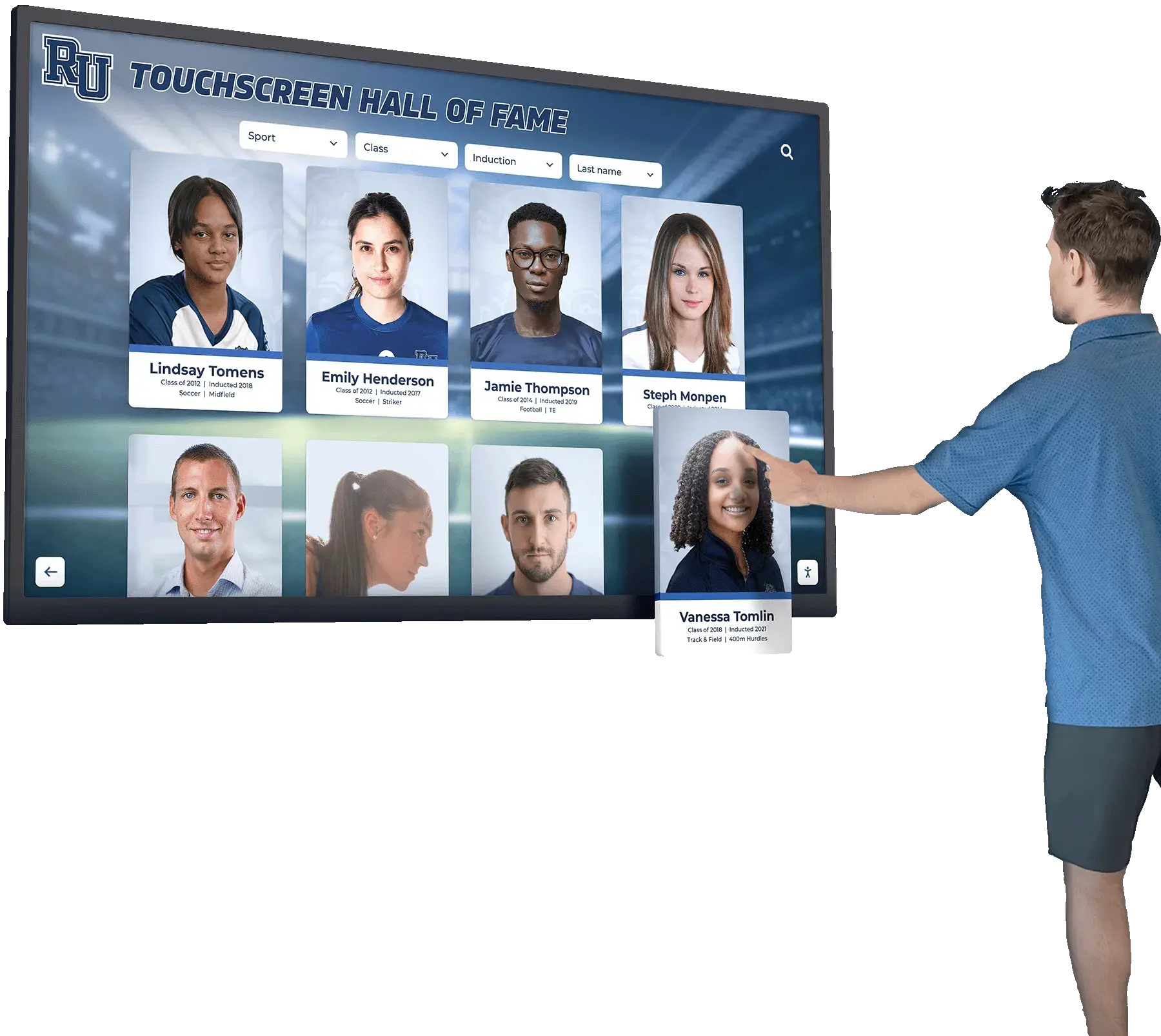
The Basketball Hall of Fame’s recognition extends beyond just NBA stars. Inductees include college coaches like John Wooden and Mike Krzyzewski, international players who elevated basketball globally, women’s basketball pioneers, NBA and WNBA legends, contributors who advanced the game through innovation and leadership, and entire teams that achieved historic accomplishments.
2025 Basketball Hall of Fame Class
The Class of 2025 demonstrates the Basketball Hall of Fame’s commitment to recognizing diverse basketball excellence. Inductees include NBA superstars Carmelo Anthony and Dwight Howard, WNBA legends Sue Bird, Maya Moore, and Sylvia Fowles, the 2008 U.S. Olympic “Redeem Team,” two-time NCAA champion coach Billy Donovan, and longtime NBA referee Danny Crawford.
The enshrinement ceremony takes place annually in September at Symphony Hall in Springfield, with over 50 Hall of Famers typically attending. NBA TV provides live coverage of the enshrinement festivities, which include an autograph session, media availability, Tip-Off Celebration and Awards Gala, and the formal enshrinement ceremony recognizing new inductees.
Selection Process and Criteria
The Basketball Hall of Fame maintains rigorous selection standards ensuring only the most distinguished basketball figures receive induction. A 24-member Honors Committee, representing all constituencies of basketball, reviews nominations and votes on candidates who have been retired from playing or coaching for at least three full seasons.
Candidates must receive 18 votes from the 24-member committee for election. The selection process considers playing or coaching excellence, contributions to basketball’s growth and development, character and sportsmanship throughout careers, and impact on basketball at their competitive level and beyond.
This thorough evaluation ensures Basketball Hall of Fame induction represents truly elite achievement, maintaining the prestige and credibility that make this recognition basketball’s highest honor.
Building Basketball Halls of Fame for High Schools and Colleges
While the Naismith Memorial represents basketball’s ultimate recognition, high schools, colleges, and universities create their own basketball halls of fame celebrating program-specific excellence and local basketball legends who may not reach national prominence but profoundly impacted their communities.
Why Schools Need Basketball Halls of Fame
Basketball programs at all competitive levels benefit significantly from formal hall of fame recognition systems that honor distinguished players, coaches, and contributors.
Preserving Basketball History: Without systematic documentation, legendary players, championship teams, and transformational coaches gradually fade from collective memory as decades pass. Hall of fame programs create permanent records ensuring basketball excellence remains part of institutional identity rather than being forgotten over time.

Inspiring Current Players: Recognition of past excellence creates powerful motivation for current basketball players who see tangible evidence of what commitment and achievement can accomplish. When players understand program history and see detailed profiles of inductees who came before them, they grasp concrete pathways to excellence while understanding that the program honors achievement permanently.
Strengthening Alumni Engagement: Basketball hall of fame programs create natural connection points between schools and former players, fostering engagement that extends well beyond playing careers. Recognition demonstrates institutional appreciation while creating frameworks for former players to mentor current athletes, share experiences, and maintain lifelong connections to programs.
Recruiting Advantage: Prospective players and their families evaluate programs partially through demonstrated tradition and commitment to recognizing achievement. Comprehensive recognition provides tangible evidence of program quality and creates aspirational identification with basketball excellence that influences recruitment decisions.
Resources on community hall of fame programs provide frameworks applicable to basketball-specific recognition that strengthens program culture.
Basketball Hall of Fame Categories and Criteria
Comprehensive basketball halls of fame recognize diverse contributions to program success beyond just exceptional players. Well-designed recognition systems celebrate multiple excellence pathways while maintaining meaningful standards.
Player Inductees: Individual basketball players who demonstrated exceptional performance, leadership, and character during their careers represent the core of most basketball halls of fame:
- All-Conference and All-State Selections: Players earning all-conference honors, all-state recognition, or national awards like McDonald’s All-American demonstrated sustained excellence at highest competitive levels
- Statistical Leaders and Record Holders: Career or single-season leaders in points, rebounds, assists, steals, blocks, or field goal percentage who set benchmarks for future generations
- Championship Teams: Players on conference championship teams, state tournament qualifiers, or national championship squads who achieved collective excellence
- College and Professional Success: Alumni who competed collegiately or professionally—including NBA, WNBA, international leagues, or successful college careers—bring reflected glory to programs
- Four-Year Contributors: Multi-year varsity players who demonstrated commitment, leadership, and sustained contribution across entire high school or college careers
Coaching Inductees: Coaches who built basketball programs, developed talent, and created winning traditions deserve recognition alongside the players they mentored:
- Championship Coaches: Head coaches who led teams to conference championships, state tournament appearances, or national recognition achieved ultimate coaching success measures
- Program Builders: Coaches who elevated programs to new competitive levels—increasing win totals, achieving program-first milestones, or establishing sustained excellence—leave lasting legacies
- Coaching Longevity: Long-tenured coaches who dedicated significant portions of careers to single institutions demonstrate loyalty and commitment worthy of permanent appreciation
- Developer of Talent: Coaches recognized for exceptional ability to develop players—transforming unranked recruits into all-conference performers or preparing athletes for college/professional opportunities
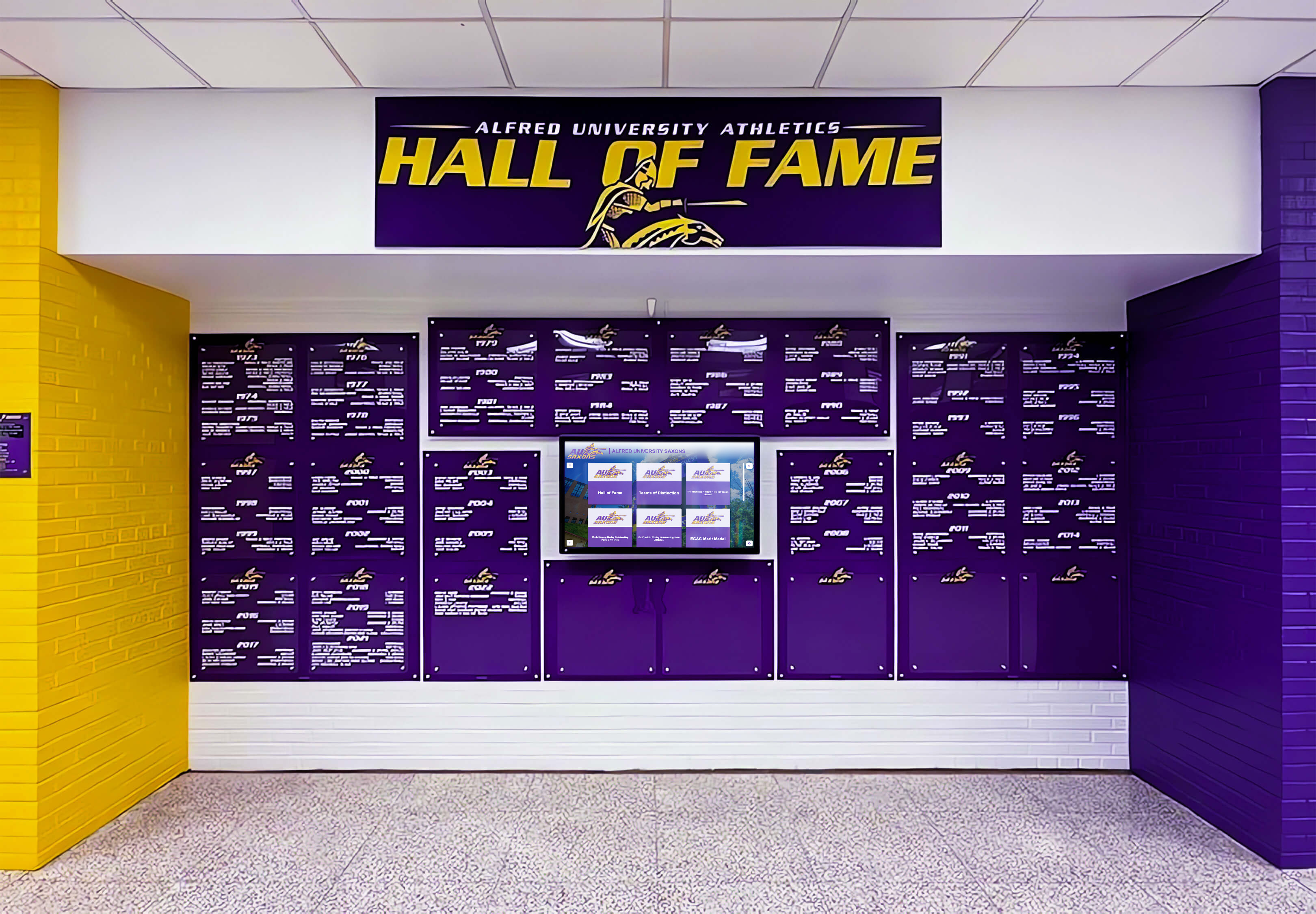
Team Inductees: Championship and historically significant teams merit collective recognition that honors shared achievement and team chemistry:
- Championship Teams: Conference championship teams, state tournament qualifiers, and national championship squads achieved collective excellence deserving permanent commemoration
- Undefeated or Historic Seasons: Teams completing undefeated seasons or achieving remarkable records represent rare collective excellence worth celebrating
- Historic Milestone Teams: Teams achieving program firsts—first conference title, first state tournament appearance, first victory over traditional rival—hold special significance in program history
Contributor Inductees: Non-playing contributors whose support, advocacy, or service significantly impacted basketball programs deserve recognition alongside players and coaches:
- Athletic Directors and Administrators: Administrators who built facilities, increased resources, or elevated programs competitively contributed indirectly but significantly to basketball success
- Athletic Trainers: Long-serving trainers who kept players healthy and enabled sustained performance deserve appreciation for essential contributions
- Boosters and Donors: Major supporters whose philanthropy built facilities, funded travel, or provided resources enabling program excellence made tangible contributions deserving acknowledgment
Understanding athletic hall of fame recognition helps programs develop comprehensive criteria that honor diverse basketball contributions.
Selection Processes That Maintain Credibility
Credible basketball hall of fame programs require transparent selection criteria and structured nomination processes ensuring fair, defensible decisions that maintain community respect.
Establishing Eligibility Requirements: Specific eligibility standards prevent confusion and establish baseline requirements for hall of fame consideration:
- Waiting Periods: Most programs require minimum waiting periods—commonly five to ten years—between completing eligibility and hall of fame consideration, ensuring perspective on careers and achievements
- Participation Requirements: Eligibility typically requires completing playing career at the institution, preventing transfer players who competed minimally from consideration
- Character Standards: Many programs require exemplary conduct and character, reserving hall of fame honor for individuals whose behavior aligns with institutional values
- Achievement Thresholds: Institutions typically establish achievement thresholds—all-conference honors, statistical benchmarks, championship participation, or comparable standards—ensuring recognition maintains meaningful standards
Creating Nomination Systems: Structured nomination approaches balance accessibility with thoroughness:
- Open Nomination Windows: Annual nomination periods—typically several months—allow adequate time for supporters to prepare thorough nominations while creating regular recognition opportunities
- Multiple Nomination Sources: Accepting nominations from various sources—alumni, current coaches, athletic staff, fans, former teammates—ensures worthy candidates receive consideration
- Nomination Form Requirements: Standardized forms requesting biographical details, achievement summaries, supporting documentation, and statistical records ensure consistent information for evaluation
Selection Committee Structure: Committee composition should ensure diverse perspectives and credibility:
- Membership Diversity: Committees should include athletic administrators, former players and coaches, faculty representatives, and community members bringing varied expertise
- Conflict Management: Clear policies addressing committee member relationships with nominees—requiring recusals when appropriate—maintain selection integrity
Resources on digital hall of fame planning help basketball programs develop structured selection processes ensuring fair evaluation.
Modern Display Options for Basketball Halls of Fame
Basketball programs implementing or upgrading hall of fame recognition face important decisions about display formats, with options ranging from traditional physical displays to cutting-edge interactive digital systems.
Traditional Physical Recognition
Conventional basketball recognition formats remain popular for their tangible presence and formal aesthetic:
Trophy Cases and Displays: Glass-enclosed cases displaying jerseys, basketballs, championship trophies, and commemorative items create three-dimensional basketball recognition with artifact authenticity. Trophy cases work particularly well for championship recognition but face capacity constraints as programs add achievements over time.
Photo Walls and Boards: Mounted photographs with name plates provide visual recognition allowing viewers to see inductees. Photo displays create personal connections but face challenges with consistency across eras, space limitations, and maintenance requirements as displays age.
Engraved Plaques: Individual plaques mounted in gymnasiums or athletic facilities provide permanent, formal recognition. While limited in information capacity, plaques convey gravitas and permanence that resonates with traditional audiences.
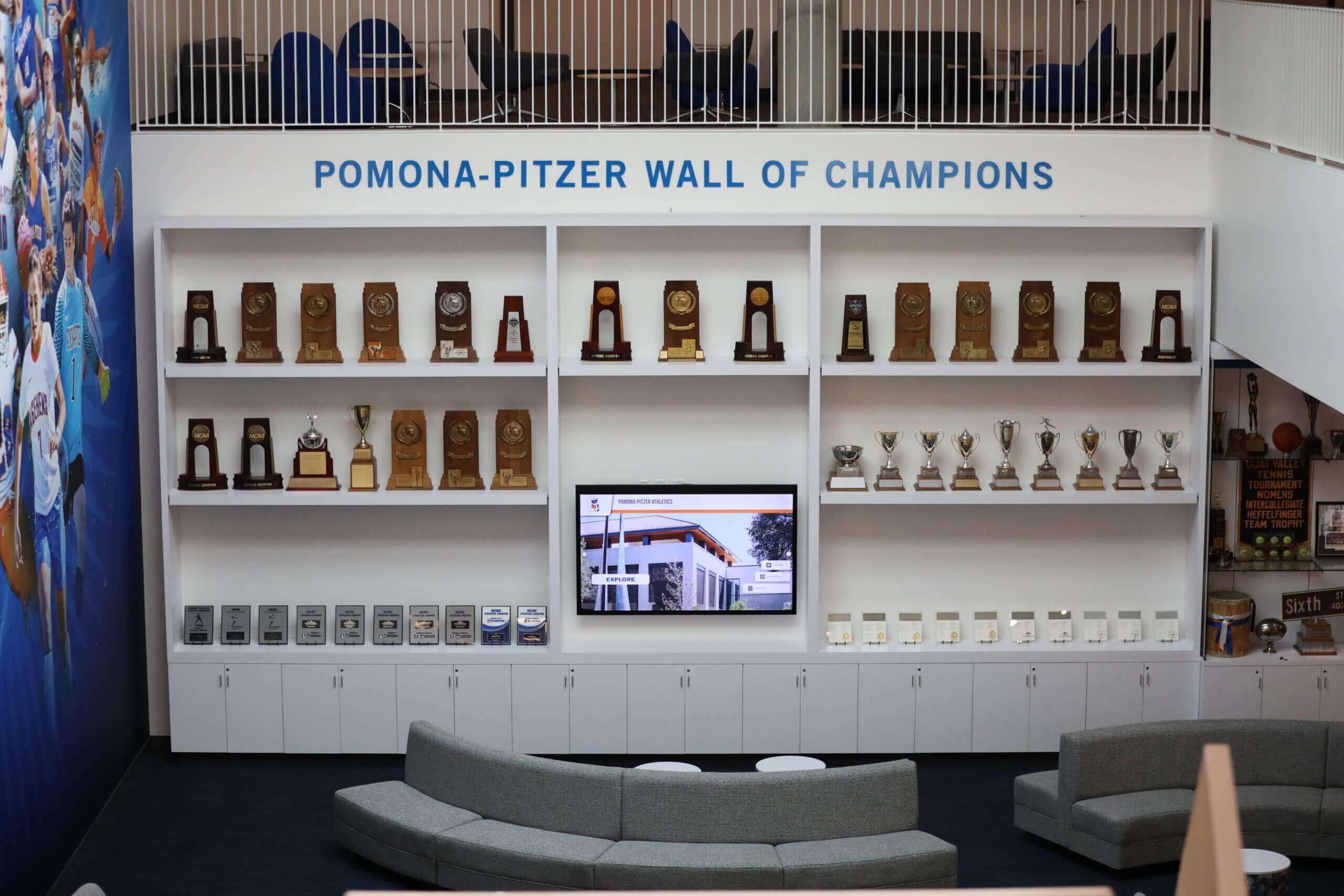
Limitations of Physical Displays: Traditional formats share common constraints—limited information capacity, difficulty updating, space restrictions preventing unlimited growth, and inability to incorporate multimedia elements that bring basketball achievements to life.
Digital Interactive Basketball Recognition Systems
Interactive digital displays overcome traditional format limitations while offering expanded capabilities for comprehensive basketball recognition:
Touchscreen Hall of Fame Kiosks: Interactive touchscreens allow visitors to explore detailed player and coach profiles, search by name or year, filter by achievement type or era, and access multimedia content including game highlights, career statistics, audio interviews, and extensive photo galleries.
Solutions like interactive hall of fame systems provide intuitive interfaces encouraging extended engagement while accommodating unlimited basketball content.
Unlimited Capacity: Digital displays accommodate hundreds of inductees without space constraints. As basketball programs grow, adding inductees requires content updates rather than physical construction or difficult decisions about display space.
Rich Multimedia Basketball Content: Video game highlights, career statistics displays, audio interviews with players and coaches, photo galleries spanning careers, and extensive narratives create comprehensive profiles impossible with physical plaques.

Easy Updates and Maintenance: Adding basketball inductees, correcting information, or enhancing profiles requires simple content management rather than ordering new plaques or physically modifying displays. This ease reduces long-term costs while ensuring timely recognition.
Search and Filtering Capabilities: Visitors can instantly locate specific players, explore inductees from particular decades, filter by position or achievement category, or browse championship teams. This functionality enhances user experience while ensuring all basketball achievements remain discoverable.
Analytics and Engagement Data: Digital systems track which inductees generate most interest, which content receives most views, and engagement patterns. These insights inform content development while demonstrating recognition program value to administrators.
Guidance on student awards recognition programs demonstrates how modern digital systems transform athletic recognition across all sports including basketball.
Advantages of Digital Basketball Hall of Fame Displays
Interactive digital systems offer compelling benefits for basketball program recognition:
- Cost-Effective Long-Term: While requiring higher initial investment, digital systems eliminate recurring costs for new plaques, physical modifications, and display maintenance that accumulate with traditional approaches
- Enhanced Recruiting Tool: Prospective players can explore program history in detail, watch highlight videos of former stars, and envision themselves among future inductees through engaging digital experiences
- Remote Accessibility: Web-integrated displays extend basketball recognition beyond physical locations, allowing alumni worldwide to explore program history and current players to access inspiration anywhere
- Professional Presentation: High-quality displays communicate that basketball programs value achievement enough to invest in professional recognition, enhancing program prestige
Understanding hall of fame complete guides helps basketball programs evaluate digital options and select solutions matching their needs for comprehensive recognition.
Basketball Hall of Fame Content and Storytelling
Effective basketball recognition requires compelling content that honors inductees appropriately while engaging audiences and telling complete achievement stories.
Essential Profile Elements for Basketball Inductees
Comprehensive basketball hall of fame profiles should include standard information elements ensuring consistent, thorough recognition:
Biographical Information: Full name, years competed, hometown, position played, jersey number, and current location provide basic context. Including specific identifiers creates additional recognition elements particularly meaningful to former teammates and fans.
Basketball Achievements: Detailed summary of competitive accomplishments:
- Statistical achievements (career points, rebounds, assists, shooting percentages)
- Honors received (all-conference, all-state, player of the year awards)
- Championship participation (conference titles, state tournament appearances, championships won)
- Record-setting achievements and program milestones
- Memorable games and defining performances
Team Context: Recognition of teammates, coaching influences, and team success contextualizes individual achievement within basketball program history.
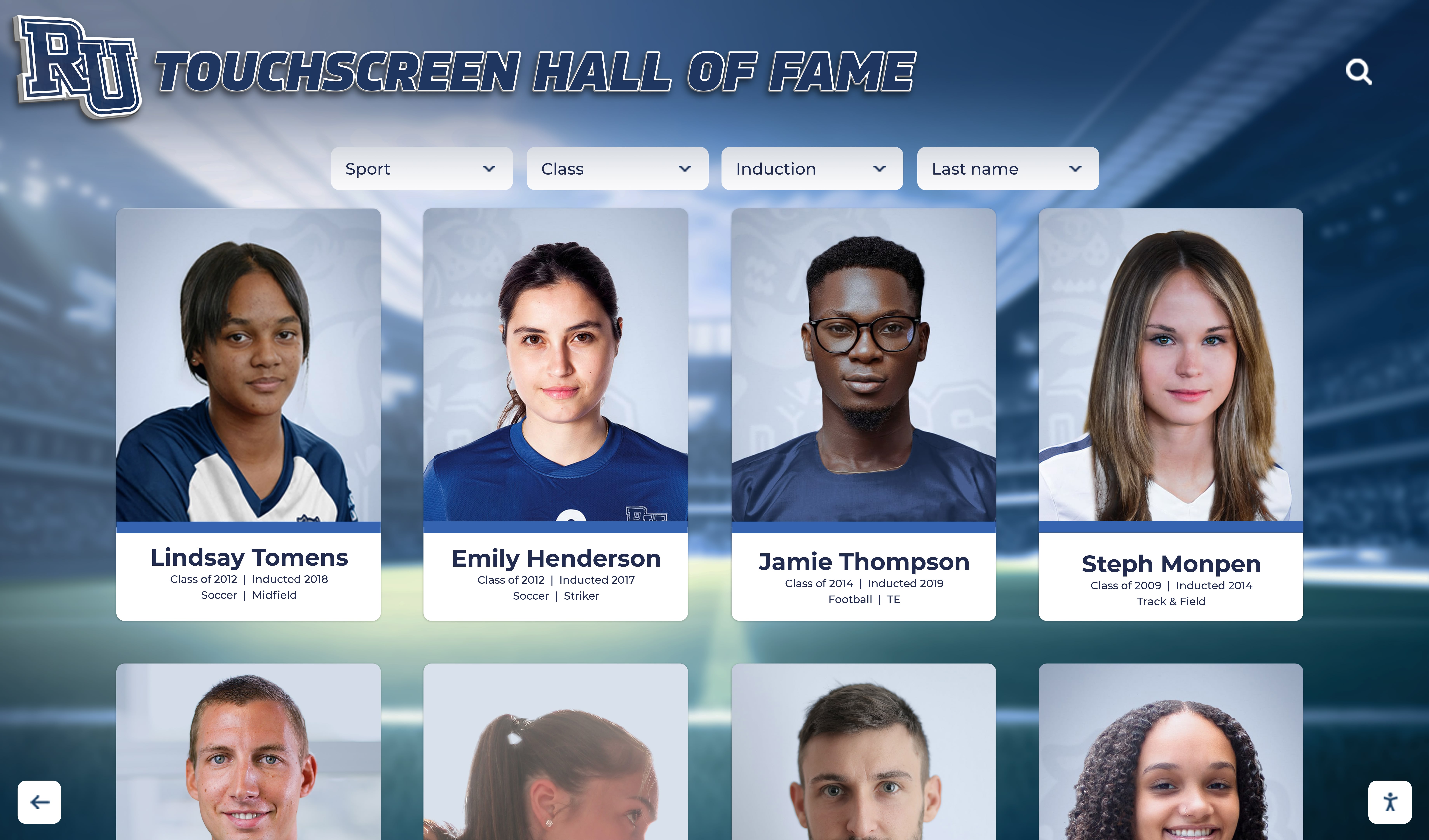
Post-Playing Career: College or professional basketball careers, career achievements in other fields, community leadership roles, and continued contributions to basketball or institutions demonstrate long-term impact.
Personal Reflections: First-person quotes about basketball experiences, memorable games, teammates and coaches remembered, and advice for current players create personal connections and convey program values.
Multimedia Elements: Action photographs from games, highlight video clips of signature plays, audio interviews, newspaper clippings, and other visual content bring profiles to life beyond text alone.
Writing Compelling Basketball Recognition Content
Professional basketball content development requires attention to tone, accuracy, and basketball-specific language:
Basketball-Specific Language: Use proper terminology and metrics. Describe shooting percentages, defensive capabilities, court vision, basketball IQ, leadership qualities, and position-specific skills accurately using language basketball communities understand.
Active, Engaging Language: Write in active voice using dynamic verbs and specific details. “Johnson averaged 24 points and 8 rebounds while leading the team to three consecutive conference championships” engages more effectively than “Johnson was a good basketball player.”
Specific Achievement Details: Quantify accomplishments whenever possible. Instead of “outstanding career,” write “scored 1,847 career points, fifth-highest in program history, while shooting 48% from the field and earning All-State honors twice.”
Historical Context: Provide context helping audiences understand achievement significance. Note where statistics rank in program history, explain competitive landscape during playing era, or describe obstacles overcome.
Balanced Tone: Maintain professional, respectful tone avoiding hyperbole. Let basketball achievements speak for themselves through specific details rather than excessive adjectives.
Resources on how to showcase student achievement provide frameworks for creating compelling athletic narratives that honor basketball excellence while engaging diverse audiences.
Implementation Best Practices for Basketball Halls of Fame
Basketball programs launching or upgrading hall of fame programs should follow proven practices ensuring successful implementation and long-term sustainability.
Planning Phase Considerations
Thorough preparation establishes foundations for basketball hall of fame success:
Goal Definition: Clearly articulate program purposes—preserving basketball history, inspiring current players, engaging alumni communities, demonstrating commitment to basketball excellence. Clear goals guide decision-making about criteria, display formats, and resource allocation.
Stakeholder Engagement: Involve key constituencies—athletic director, basketball coaches, sports information staff, basketball alumni, current players—early in planning. Stakeholder input builds buy-in while incorporating diverse perspectives.
Resource Assessment: Realistically evaluate available resources—budget, staff time, physical space, technical capabilities. Matching ambitions to resources prevents under-resourced programs that disappoint expectations.
Timeline Development: Create realistic implementation timelines accounting for committee formation, criteria development, nomination solicitation, selection processes, content creation, and display installation.

Budget and Funding Strategies
Financial planning should account for both initial investments and ongoing operational costs:
Initial Investment Components: Budget for display hardware or materials, software platforms or custom development, content creation for inaugural inductees, installation or construction, and launch event expenses.
Ongoing Operational Costs: Account for annual licensing fees for digital platforms, content creation for new inductees, hardware maintenance or replacement, and staff time for program administration.
Fundraising Opportunities: Basketball hall of fame projects offer natural fundraising themes appealing to basketball alumni and program supporters. Consider naming opportunities for display spaces, sponsored inductee recognitions, or endowments funding ongoing operations.
Basketball Alumni Campaigns: Some institutions successfully conduct basketball-specific fundraising campaigns where former players fund recognition for program achievements, eventually building comprehensive recognition across basketball history.
Technical Considerations for Digital Basketball Systems
Digital implementations require attention to technical infrastructure and long-term maintenance:
Hardware Selection: Choose commercial-grade displays designed for continuous operation rather than consumer equipment. Consider screen size, resolution, touch sensitivity, and enclosure durability for athletic facility environments.
Software Platform Evaluation: Assess content management ease, design flexibility, basketball-specific organization capabilities, multimedia support, search functionality, and vendor stability.
Network Infrastructure: Ensure reliable network connectivity for displays requiring internet access. Plan for both wired and wireless connectivity with adequate bandwidth for basketball video content.
Physical Installation: Professional mounting, appropriate viewing heights in gymnasiums or lobbies, power delivery, and environmental considerations ensure optimal display performance.
Guidance on best touchscreen display for schools helps basketball programs navigate technical decisions and specify appropriate equipment.
Launch Event Planning
Inaugural induction ceremonies establish basketball hall of fame program tone while generating excitement:
Event Timing: Coordinate launches with high-visibility occasions—homecoming basketball games, alumni weekends, or major athletic events—maximizing attendance and attention.
Inductee Participation: Invite inaugural basketball inductees to attend, recognizing them publicly during ceremonies and providing opportunities for interaction with current players and fans.
Display Unveiling: Create dramatic reveals of new basketball displays through coverings removed during ceremonies, generating excitement while focusing attention on recognition installations.
Media Coverage: Generate press releases, invite media coverage, and create shareable social media content amplifying program visibility beyond ceremony attendees.
Famous Basketball Halls of Fame and Recognition Models
Beyond the Naismith Memorial, numerous basketball halls of fame at various levels provide inspiration and models for effective recognition:
NBA Team Halls of Fame
Professional basketball teams maintain their own halls of fame celebrating franchise-specific excellence. The Boston Celtics have retired more jersey numbers than any NBA franchise, honoring legends like Bill Russell, Larry Bird, and John Havlicek. The Los Angeles Lakers honor Magic Johnson, Kareem Abdul-Jabbar, Kobe Bryant, and other franchise legends. The Chicago Bulls celebrate Michael Jordan’s legacy alongside other team greats.
These professional models demonstrate how basketball halls of fame can honor franchise-specific excellence while maintaining the prestige that makes recognition meaningful.
College Basketball Halls of Fame
Major college basketball programs operate distinguished halls of fame. Duke’s K-ville recognition honors Cameron Indoor Stadium history. North Carolina’s tradition includes extensive recognition of legendary players and coaches. Kansas basketball honors its rich heritage dating to Dr. Naismith’s coaching tenure.
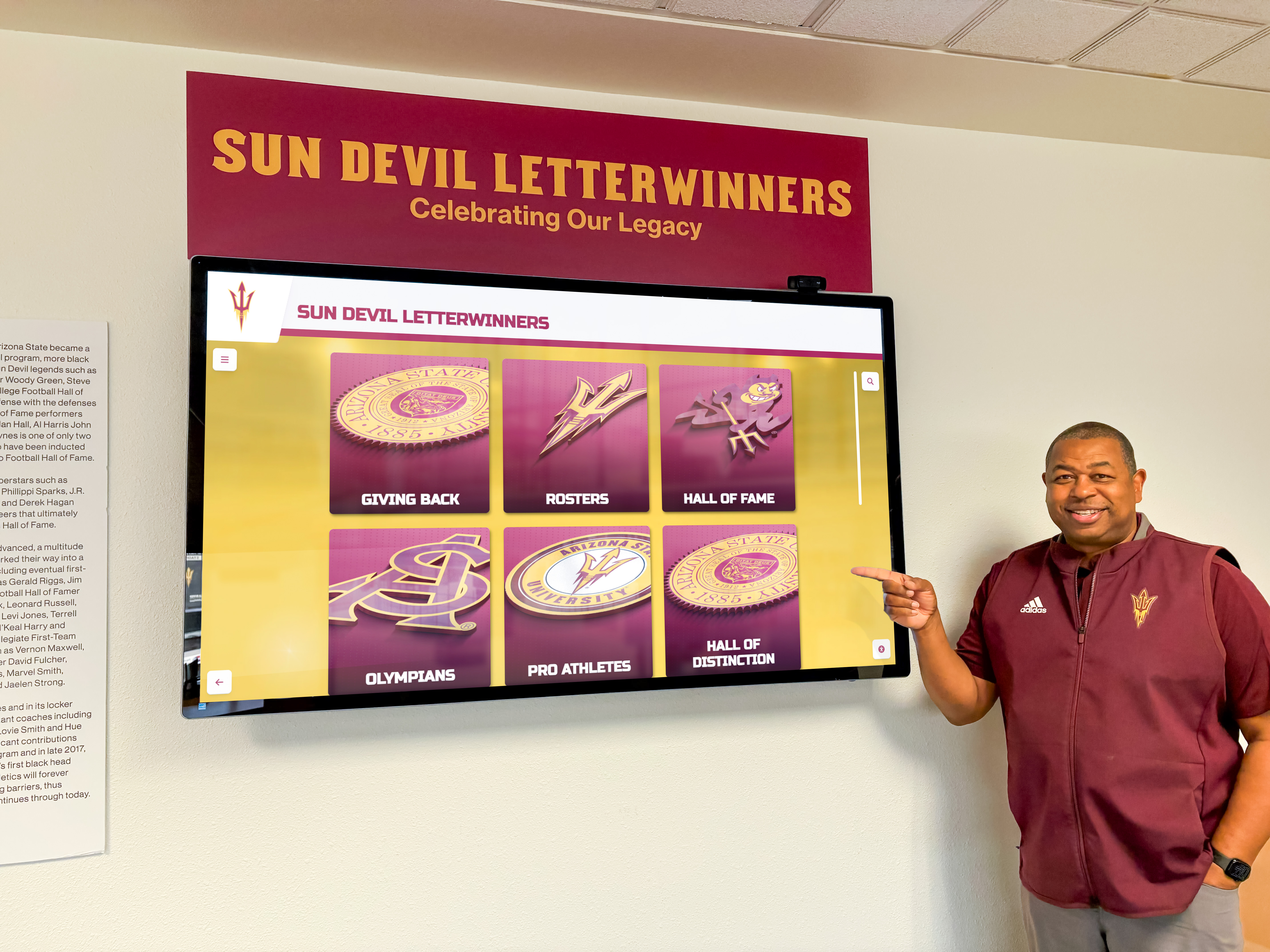
These college models show how basketball programs can integrate hall of fame recognition into broader athletic recognition systems while maintaining basketball-specific celebration.
Women’s Basketball Recognition
The Women’s Basketball Hall of Fame in Knoxville, Tennessee, celebrates women’s basketball excellence across all levels. This specialized recognition acknowledges that women’s basketball history and achievement deserve dedicated preservation and celebration.
Progressive programs ensure their basketball halls of fame provide equal recognition to men’s and women’s basketball achievements, honoring stars, coaches, and championship teams regardless of gender.
High School Basketball Models
State basketball associations often maintain halls of fame recognizing high school basketball excellence statewide. Indiana’s rich basketball tradition includes extensive high school recognition. Kentucky, North Carolina, and other basketball-focused states celebrate prep basketball legends.
Individual high schools create basketball-specific recognition within broader athletic halls of fame or as standalone basketball hallways celebrating program history, championship teams, and legendary players who may not have achieved college or professional success but profoundly impacted local communities.
Maintaining Long-Term Basketball Hall of Fame Success
Sustained program vitality requires ongoing attention, regular inductions, content enhancement, and continuous improvement.
Annual Operations Calendar
Consistent operations maintain basketball hall of fame momentum:
Fall Planning (August-October): Committee formation, criteria review, budget confirmation, timeline establishment, and outreach to basketball alumni.
Winter Nominations (November-January): Nomination period announcement, outreach to basketball constituencies, form distribution, and submission collection.
Spring Selection (February-April): Nominee evaluation, committee deliberation, selection voting, inductee notification, and public announcement.
Summer Preparation (May-July): Inductee profile development, multimedia content collection, display updates, and induction ceremony planning.
Fall Induction (August-October): Ceremony execution, media coverage, display unveiling, and celebration of basketball excellence.
Program Enhancement Strategies
Continuous improvement keeps basketball hall of fame programs engaging:
Criteria Evolution: Periodically review selection criteria ensuring they remain appropriate, reflect current program values, and maintain meaningful standards as basketball programs evolve.
Content Enrichment: Systematically enhance existing basketball inductee profiles with additional photos, updated life information, anniversary retrospectives, or improved multimedia as resources permit.
Technology Upgrades: Plan for periodic technology refreshes—updated displays, improved software platforms, enhanced capabilities—maintaining modern user experiences.
Engagement Expansion: Develop new engagement opportunities such as inductee speaker series, mentorship programs connecting inductees with current basketball players, or social media campaigns featuring inductee stories.
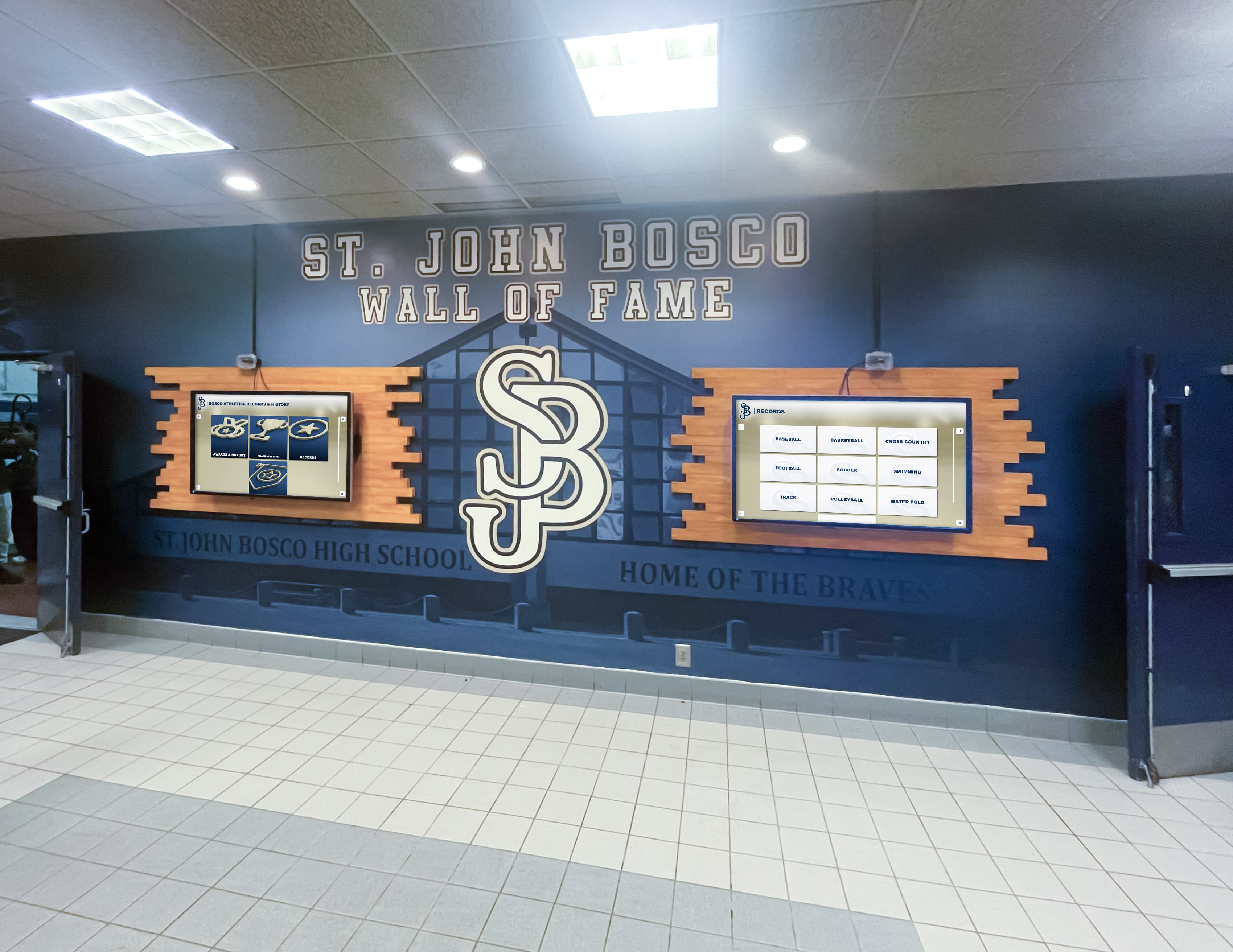
Resources on coaches appreciation and recognition provide frameworks for honoring basketball coaches alongside player achievements.
Conclusion: Celebrating Basketball Excellence Through Comprehensive Recognition
Basketball halls of fame serve vital purposes in basketball program operations and community engagement. They preserve institutional basketball history that would otherwise fade, honor individuals whose achievements deserve permanent recognition, inspire current basketball players by connecting them to program traditions, engage alumni communities around shared basketball experiences, and demonstrate institutional commitment to celebrating basketball excellence.
The most effective basketball hall of fame programs balance clear selection standards applicable across eras with accessible nomination processes, combine traditional recognition gravitas with modern engagement capabilities, and maintain consistent operations that add new inductees regularly while enhancing existing content periodically.
Whether basketball programs choose traditional plaques, cutting-edge digital displays, or hybrid approaches combining both, the core principles remain constant: transparent criteria, fair processes, compelling content, and sustained commitment to program vitality.
Digital recognition solutions like those from Rocket Alumni Solutions offer particular advantages for basketball programs seeking to honor achievements comprehensively. Unlimited growth capacity eliminates difficult decisions about display space, rich multimedia storytelling brings basketball achievements to life emotionally, cost-effective long-term operations reduce recurring expenses, and engaging visitor experiences make recognition meaningful to contemporary audiences.
The ability to accommodate unlimited basketball inductees, easily update content, incorporate game highlights and statistics, provide sophisticated search functionality, and extend recognition beyond physical locations makes interactive digital hall of fame systems increasingly popular in basketball programs committed to comprehensive recognition.
Beyond the immediate purpose of honoring achievement, effective basketball halls of fame strengthen connections between past, present, and future—linking legendary players from earlier eras with current teams building new chapters of excellence while inspiring future generations who will carry basketball traditions forward. They demonstrate that basketball programs value excellence, inspire players pursuing the sport, and create tangible connections extending across decades of commitment, achievement, and contribution to basketball heritage.
Basketball programs ready to launch or enhance hall of fame programs can explore additional resources on hall of fame complete guides and digital recognition solutions that honor basketball legends while creating sustainable programs benefiting basketball communities for generations to come.
Basketball builds more than winning records—it develops young athletes, creates lasting memories, forges lifelong bonds, and contributes to community identity in ways that transcend individual seasons or specific programs. Basketball hall of fame recognition ensures these contributions receive the lasting acknowledgment they deserve while inspiring continued excellence in the sport that has captured hearts and imaginations worldwide since Dr. Naismith nailed that first peach basket to a gymnasium wall in 1891.
